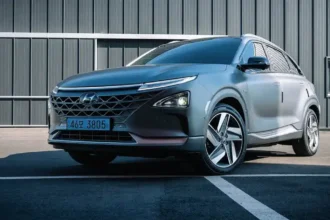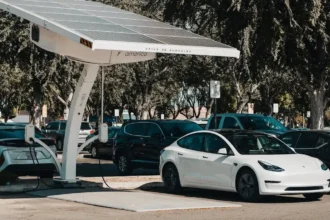Have you ever imagined sitting in your car and letting it drive itself while you relax? What was once a dream has now become a growing reality with the rise of self-driving cars. But what does the future hold for these autonomous vehicles in the USA? This article dives into the latest advancements, challenges, and what the future might look like for self-driving cars in America.
Introduction: The Rise of Self-Driving Cars in the USA
Over the past decade, the automotive industry has seen remarkable advancements in self-driving technology. Major companies like Tesla, Waymo, and General Motors have invested billions into creating fully autonomous cars. But what’s next for this groundbreaking technology? And how will it change the way Americans drive?
In this comprehensive article, we’ll explore everything you need to know about the future of self-driving cars in the USA, from their current state to the upcoming innovations that could change the landscape of transportation forever.
The Current State of Self-Driving Cars in the USA
Self-driving cars, also known as autonomous vehicles (AVs), have evolved significantly since their inception. Today, they can be found testing on public roads in cities like San Francisco, Phoenix, and Las Vegas.
Levels of Autonomy
One important thing to understand about self-driving cars is the different levels of autonomy. The Society of Automotive Engineers (SAE) has classified autonomous vehicles into six levels:
- Level 0: No Automation – The driver is fully responsible.
- Level 1: Driver Assistance – Features like adaptive cruise control and lane-keeping assist.
- Level 2: Partial Automation – The car can steer, accelerate, and brake but requires the driver’s supervision.
- Level 3: Conditional Automation – The car handles most driving tasks but may need driver intervention.
- Level 4: High Automation – The car can operate without human intervention in certain conditions.
- Level 5: Full Automation – The vehicle is fully autonomous, with no need for a human driver.
Currently, most autonomous cars on the road in the USA are at Level 2 or Level 3. Tesla’s “Autopilot” feature, for example, offers partial automation, requiring drivers to stay alert.
Adoption Rate and Market Growth
The adoption of self-driving cars in the USA is growing, albeit at a slower rate than originally predicted. By 2024, it’s expected that the self-driving car market will generate $173 billion globally, with the USA being a significant contributor. Several states, including California and Arizona, have already begun implementing laws to regulate the use of autonomous vehicles, setting the stage for broader adoption across the country.
The Benefits of Self-Driving Cars
There are numerous benefits associated with autonomous vehicles, which is why they are considered the future of transportation. These benefits include:
1. Improved Road Safety
Human error is the leading cause of traffic accidents in the USA. According to the National Highway Traffic Safety Administration (NHTSA), 94% of serious crashes are due to human mistakes. Self-driving cars, equipped with advanced sensors and AI technology, could drastically reduce these numbers by eliminating distracted driving, fatigue, and other human-related errors.
2. Enhanced Mobility for All
Autonomous cars could significantly improve mobility for people who are unable to drive, such as the elderly, disabled, or visually impaired. This opens up a world of opportunities for greater independence.
3. Reduced Traffic Congestion
Self-driving cars can communicate with one another and make more efficient decisions on the road. This could reduce traffic congestion in major cities like New York, Los Angeles, and Chicago, improving overall traffic flow and reducing commute times.
4. Environmental Impact
Many autonomous cars are electric, which could contribute to reducing carbon emissions. As self-driving electric cars become more popular, they will help curb the harmful environmental effects caused by gasoline-powered vehicles.
Challenges Facing the Future of Self-Driving Cars
While the benefits are numerous, self-driving cars in the USA still face several challenges that need to be addressed before they can become mainstream.

1. Regulatory and Legal Issues
One of the biggest challenges is the lack of a unified national policy on autonomous vehicles. Each state has its own regulations, creating a fragmented legal landscape that companies must navigate. For example, some states allow fully autonomous testing, while others have stricter regulations.
2. Public Trust and Acceptance
Even though self-driving technology has come a long way, public trust is still a significant hurdle. Many Americans are skeptical about riding in a vehicle without a human driver. Concerns about safety, cybersecurity, and the ethical dilemmas posed by autonomous cars (such as decision-making in emergency scenarios) need to be addressed to gain widespread acceptance.
3. Technological Challenges
While AI and sensor technology have advanced, they are not perfect. Self-driving cars still struggle in unpredictable weather conditions, complex urban environments, and situations involving pedestrians and cyclists. Achieving full autonomy in all environments is an ongoing challenge for developers.
The Future of Self-Driving Cars in the USA: What to Expect
The future of self-driving cars is bright, but several factors will shape how soon they become a reality on American roads. Here’s a look at what to expect in the coming years.
1. Autonomous Ride-Hailing Services
One of the first widespread uses of self-driving cars in the USA will likely be in ride-hailing services. Companies like Waymo and Cruise are already testing autonomous taxi services in select cities, and as the technology improves, these services could expand nationwide. Imagine calling a car with your smartphone, and a fully autonomous vehicle arrives to pick you up—no driver needed.
2. Integration with Smart Cities
As more cities adopt “smart city” technologies, self-driving cars will become an integral part of these systems. Smart cities use IoT devices, AI, and data analytics to manage transportation, energy, and infrastructure. Self-driving cars will be able to communicate with traffic lights, other vehicles, and city infrastructure to create a seamless, efficient transportation network.
3. Autonomous Trucks and Freight Transport
The trucking industry is set to be revolutionized by autonomous technology. Self-driving trucks could address the shortage of truck drivers in the USA while making long-haul transport safer and more efficient. Major companies like Tesla and Embark are already testing autonomous semi-trucks on American highways.
4. Personal Self-Driving Vehicles
While autonomous ride-hailing and freight are likely to lead the way, personal self-driving cars will also become more common. As technology improves and becomes more affordable, consumers will be able to purchase fully autonomous vehicles for personal use.
Self-Driving Cars FAQs
Q1: Are self-driving cars legal in the USA? Yes, but it depends on the state. Some states, like California and Arizona, have laws allowing the testing and use of autonomous vehicles. However, there is no federal law governing self-driving cars yet.
Q2: How safe are self-driving cars? Self-driving cars have the potential to be safer than human-driven cars, but the technology is still being refined. Most accidents involving self-driving cars have been caused by human error rather than the autonomous system itself.
Q3: When will fully autonomous cars be available? Fully autonomous cars (Level 5) are still in the development stage. Experts predict that it could take another 5-10 years before they are widely available for personal use.
Q4: Can self-driving cars reduce traffic accidents? Yes, one of the main goals of self-driving cars is to reduce traffic accidents by eliminating human error, which is the leading cause of most crashes in the USA.
Q5: How will self-driving cars affect jobs? The rise of autonomous vehicles could impact jobs in industries like trucking, taxi services, and delivery. However, it could also create new jobs in AI, software development, and infrastructure.
Conclusion: The Road Ahead for Self-Driving Cars in the USA
The future of self-driving cars in the USA is filled with exciting possibilities. While there are still many challenges to overcome, the potential benefits—ranging from increased road safety to enhanced mobility—are too significant to ignore. As the technology continues to evolve, Americans can expect to see self-driving cars become an increasingly common sight on the roads, reshaping the way we travel for years to come.









